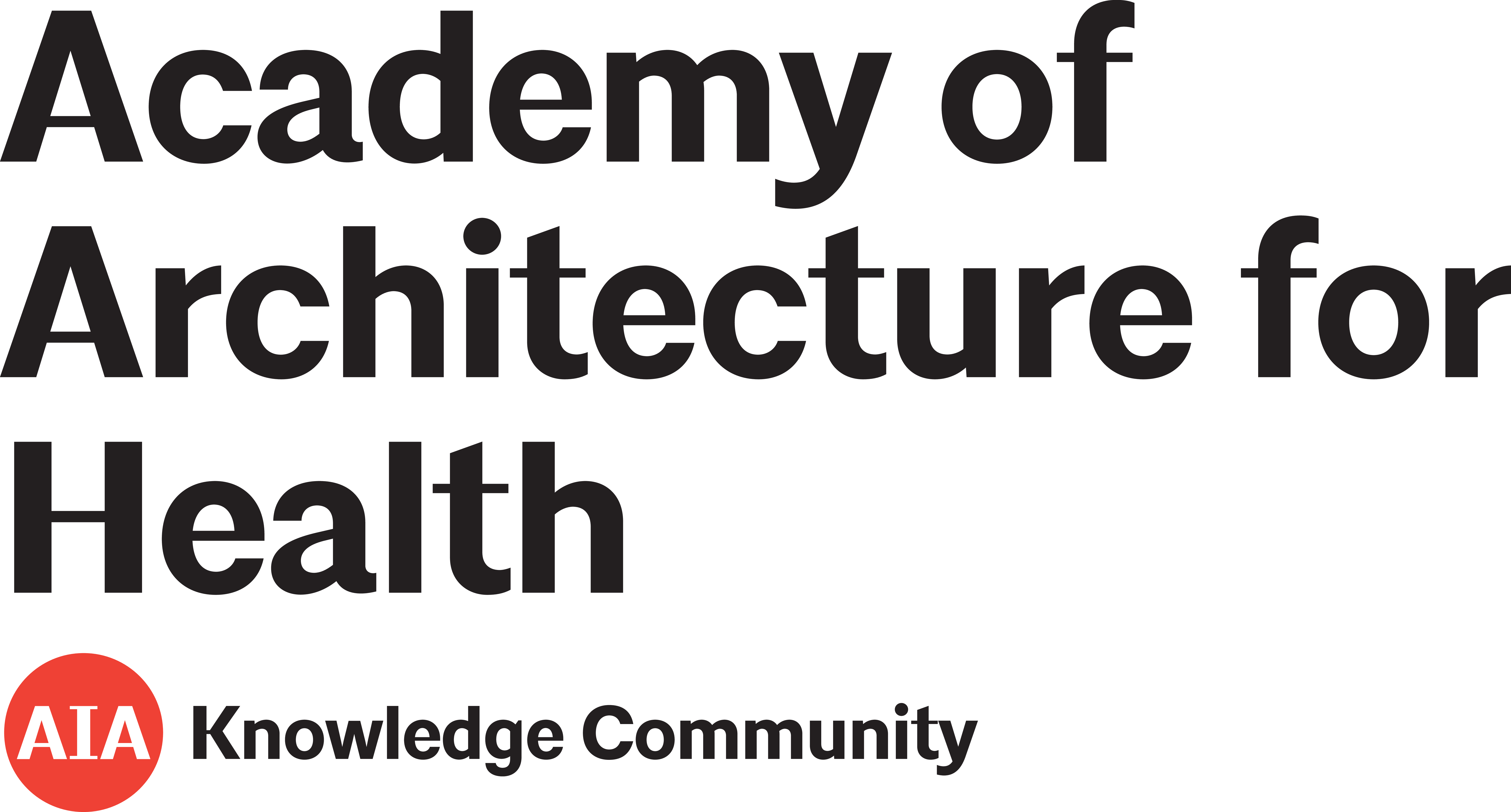Evaluating intention and effect: The impact of healthcare facility design on patient and staff well-being
2016
HERD: Health Environments Research & Design Journal
Journal Article
Issue 2
Volume 9
Pages 82-104
Author(s): Alvaro, C., Wilkinson, A. J., Gallant, S. N., Kostovski, D., Gardner, P.
Added April 2016
Making the Case for Evidence-Based Design in Healthcare: A Descriptive Case Study of Organizational Decision Making
2010
Health Environments Research & Design Journal
Journal Article
Issue 1
Volume 4
Pages 56-88
Author(s): Shoemaker, L.K., Kazley, A.S., White, A.
It is reported that an approximately 98,000 people die each year in the United States as a result of medical errors (IOM, 1999). This is unacceptable in a country that prides itself on the best medical institutions and access to the highest-end technology. It is believed that the need to renew currently standing hospitals is due to a combination of aging buildings, aging populations, and introduction of new technologies (Ulrich, 2004). This has led to a large patient safety movement and the largest hospital construction boom in U.S. history (Jones, 2004).
Added January 2016
Review: The impact of art, design and environment in mental healthcare: A systematic review of the literature
2008
The Journal of the Royal Society for the Promotion of Health
Journal Article
Issue 2
Volume 128
Pages 85-94
Author(s): Daykin, N., Byrne, E., Soteriou, T., O'Connor, S.
There is increasing evidence that attractive environments can enhance the experiences of healthcare users. What creates attractive environments may be relative to the country where that healthcare is provided. This paper was written in the UK and was an attempt to find research that supports the use of art to create healing environments along with the role of art in encouraging civic pride. It was part of a two-year evaluation of a commissioned arts program in a UK mental health trust.
Added January 2016
Making acuity-adaptable units work: lessons from the field
2012
Health Environments Research & Design Journal
Journal Article
Issue 3
Volume 5
Pages 115-128
Author(s): Zimring, C., Seo, H.
Acuity-Adaptable Units (AAUs) are rooms with a treatment model that allows all stages of patient care to come to the patient’s unit from the time of admission to discharge. Minimizing the amount of patient transfers helps decrease medication errors, infection rates, and medical complications. This helps avoid injuries and infections connected with patient transfers from unit to unit through transitions in stages of care.
Added January 2016
Ergonomics Principles Associated with Laparoscopic Surgeon Injury/Illness
2012
Human Factors
Journal Article
Issue 6
Volume 54
Pages 1087-1092
Author(s): Miller, K., Benden, M.., Pickens, A., Shipp, A., & Zheng, Q.
Although laparoscopic procedures significantly benefit patients in terms of decreased recovery times and improved outcomes, they contribute to mental fatigue and musculoskeletal problems among surgeons. A variety of ergonomic interventions and applications are implemented by surgeons to reduce health problems.
Added January 2016
Innovation Pilot Study: Acute Care for Elderly (ACE) Unit--Promoting Patient-Centric Care
2012
Health Environments Research & Design Journal
Journal Article
Author(s): Krall et al.
Older patients have different needs: cognitive impairment, chronic health issues, caregiver burden, and maintenance of functional level. These issues present challenges to healthcare organizations when caring for this population on a general medical-surgical unit.
Added January 2016
Specialized Design for Dementia
2013
Perspectives in Public Health
Journal Article
Issue 3
Volume 133
Pages 151-158
Author(s): Habell, M.
Designing for people with dementia is a major need in elderly care buildings. However, it is difficult to design for this population, as the parameters of dementia itself are often vague. The author also notes that the registration requirements in the UK for a care home make no distinction between the type of dementia or the severity of the dementia.
Added January 2016
Outcome of in-patient falls in hospitals with 100% single rooms and multi-bedded wards
2015
Age and Ageing
Journal Article
Issue 6
Volume 44
Pages 1032-1035
Author(s): Singh, I., Okeke, J., Edwards, C.
Patient falls are a major safety concern in hospitals. The authors report that up to 30% of patient falls result in injury, and that in the National Health Service (NHS) ward of U.K., 200,000 falls a year are documented. Of these, 900 incidents have been severe and 90 had resultant deaths.
Added December 2015
The Impact of a Flexible Care Area on Throughput Measures in an Academic Emergency Department
2015
Journal of Emergency Nursing
Journal Article
Issue 6
Volume 41
Pages 503-509
Author(s): McGrath, J., LeGare, A., Hermanson, L., Repplinger, M. D.
This paper explores the implementation of a novel strategy which involved the creation of a “flexible care area” (FCA), a space designed for initiating patient evaluations and treatments at the beginning of a patient’s visit.
Added December 2015
The Effectiveness of Interventions Aimed at Reducing Anxiety in Health Care Waiting Spaces: A Systematic Review of Randomized and Nonrandomized Trials
2014
Anesthesia & Analgesia
Journal Article
Issue 2
Volume 119
Pages 433-448
Author(s): Biddiss, E., Knibbe, T. J., McPherson, A.
Added October 2015
Prevalence of Musculoskeletal Disorders for Nurses in Hospitals, Long-Term Care Facilities, and Home Health Care A Comprehensive Review
2015
Human Factors: The Journal of the Human Factors and Ergonomics Society
Journal Article
Issue 5
Volume 57
Pages 754-792
Author(s): Davis, Kermit G., Kotowski, Susan E.
Added October 2015
Post-Occupancy Evaluation of Negative-Pressure Isolation Rooms: Using the Balanced Scorecard Framework
2009
Journal of Architectural and Planning Research
Journal Article
Issue 1
Volume 26
Pages 1-13
Author(s): Wang, C.-H., Kuo, N.-W.
To combat the spread of severe acute respiratory syndrome (SARS) following an epidemic outbreak in Taiwan in early 2003, all hospitals were mandated by health authorities to convert their patient rooms into negative pressure isolation rooms. The authors believe that it is necessary to evaluate these rooms to ensure that they are functioning effectively.
Added September 2015
Finding a Middle Ground: Exploring the Impact of Patient- and Family-Centered Design on Nurse–Family Interactions in the Neuro ICU
2015
HERD: Health Environments Research & Design Journal
Journal Article
Issue 1
Volume 9
Pages 80-98
Author(s): Rippin, A. S., Zimring, C., Samuels, O., Denham, M. E.
Added September 2015
Lighting, sleep and circadian rhythm: An intervention study in the intensive care unit
2015
Intensive and Critical Care Nursing
Journal Article
Pages Advance online publication
Author(s): Engwall, M., Fridh, I., Johansson, L., Bergbom, I., Lindahl, B.
Regular daylight and night darkness provided over 24 hours is important for human health in supporting the body’s circadian rhythm. Intensive care unit (ICU) patients are not exposed to this naturally occurring cycle and as result can suffer from sleep deprivation and are at risk for ICU delirium.
Added September 2015
Exploring Perceptions of Designers and Medical Staff in South Korea about Design Elements for the Elder-Friendly Hospital
2014
Journal of Interior Design
Journal Article
Issue 4
Volume 39
Pages 15-32
Author(s): Kim, D., Lee, J. H., Ha, M.
The elderly population is growing around the world and so is the geriatric patient population. The authors indicate that despite the fact that the elderly will soon be the primary users of healthcare services, healthcare facilities are not designed for the elderly. In this study, designers and medical staff were asked to rate the importance of 33 design elements in the context of an elder-friendly hospital.
Added August 2015
Emergency department observation units: A clinical and financial benefit for hospitals
2011
Health Care Management Review
Journal Article
Issue 1
Volume 36
Pages 28-37
Author(s): Baugh, C.W., Venkatesh, A. K., Bohan, J. S.
This article presents a review of literature to make a clinical and business case for establishing EDOUs. The literature was found to indicate that EDOU care contributes to more effective clinical decision-making and the generation of higher revenue than the same patients would if admitted and then discharged.
Added March 2015
Inpatient fall prevention: Use of in-room Webcams
2013
Journal of Patient Safety
Journal Article
Issue 1
Volume 9
Pages 29-35
Author(s): Hardin, S. R., Dienemann, J., Rudisill, P., Mills, K. K.
The National Database for Nursing Quality Indicators (NDNQI) maintains data on patient falls nationally. Reported fall rates have ranged from 2.2 to 7 per 1000 admissions; 10% to 25% of falls result in an injury, depending on patient population. Falls adversely impact hospital costs as well as patient costs and overall well-being. The California HealthCare Foundation reported that technological innovations in the field of fall prevention, such as wireless patient monitoring systems, resulted in faster nurse response times and increased satisfaction for both patients and staff.
Added December 2014
Including patients, staff and visitors in the design of the psychiatric milieu
2013
Facilities
Journal Article
Issue 9/10
Volume 31
Pages 379-390
Author(s): Perkins, N. H.
Most research addressing environmental design for healthcare facilities focuses on expert-determined and expert-driven outcomes. Little attention has been given to the perspectives offered by those who are ultimately using the facilities, namely the patients, staff, and visitors. Participatory design and planning (PDP) is a method that takes these non-expert opinions into consideration while operating under three assumptions. First, healthcare facilities are complex environments that require a team of people who can understand and maintain structured information necessary for optimum design.
Added December 2014
Effectiveness of installing overhead ceiling lifts: Reducing musculoskeletal injuries in an extended care hospital unit.
2002
American Association of Occupational Health Nurses Journal
Journal Article
Issue 3
Volume 50
Pages 120-127
Author(s): Ronald, L. A., Yassi, A., Spiegel, J., Tate, R. B., Tait, D., Mozel, M. R.
High rate of musculoskeletal injuries (MSI) among healthcare workers is well documented. Lifetime prevalence rates of back pain greater than 70 percent have been reported and higher incidence rates of MSI have been observed in healthcare workers compared to the general population and two other occupation groups. Mechanical lifting equipment has been recommended as an effective tool for decreasing the rate and severity of MSI in healthcare workers.
Added November 2014
Young children's perspectives of ideal physical design features for hospital-built environments
2014
Journal of Child Health Care
Journal Article
Issue 1
Volume 18
Pages 57-71
Author(s): Lambert, V., Coad, J., Hicks, P., Glacken, M.
Current research has sought to understand pediatric hospital environments through studies designed to gain insight into the hospital experience from a child’s perspective. While this research has provided insight into a child’s emotional response to being in a hospital environment, little has been done to gain insight into the physical design from a child’s perspective.
Added November 2014




